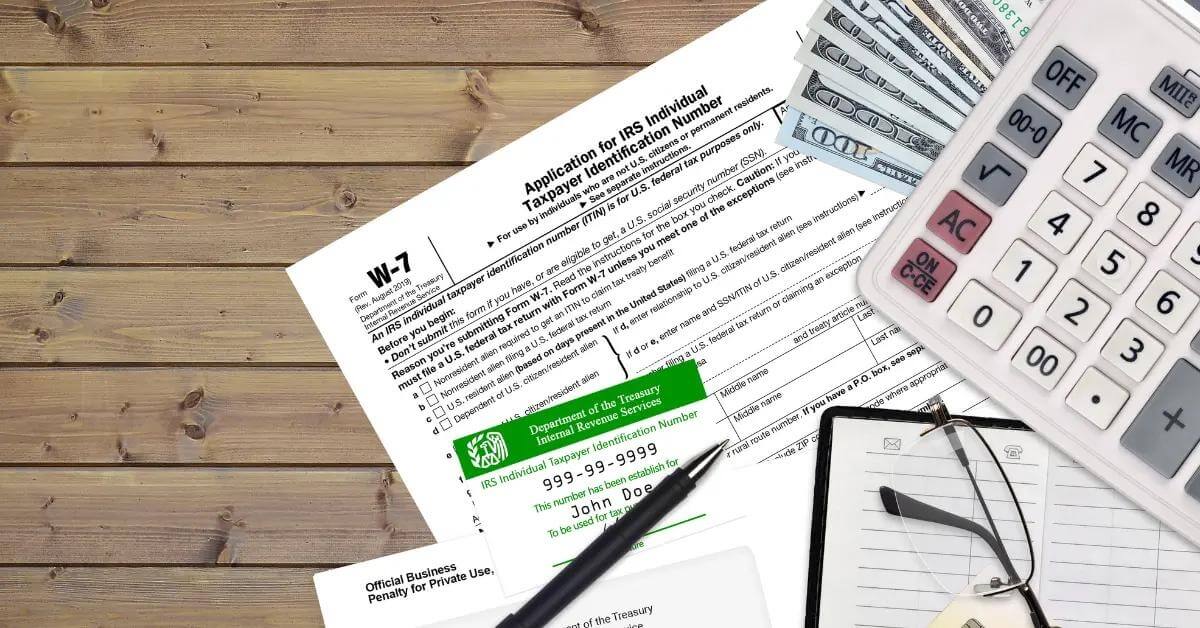If the words it’s tax season make you a little anxious and worried, you are probably like the 33% of Americans who procrastinate dealing with their yearly taxes. 22% say the thought of doing their taxes makes them anxious at just the thought.
No matter your feelings on filing your taxes, they are a yearly reality you must face.
So, what can you do to get yourself prepared this year? The best plan is to work with experienced tax attorneys whose job it is to keep up with changes from the IRS. You also want to know what forms you’ll need from the IRS.
Read on to learn what you need to know to get your 2021 taxes filed on time.
Be Prepared for Tax Deadlines
If you were one of the millions of taxpayers who waited and waited last year for a refund, you might be anxious to get your taxes in early this year to avoid the backlog.
You want to prepare to meet those tax deadlines that are quickly approaching. For most people across the US, the tax deadline falls on Monday, April 18, 2022. There are state holidays in Massachusetts and Maine that extend the deadline by 1 day.
Some states also have different tax deadlines than the federal deadline.
There are also deadlines for people who pay quarterly taxes and to report cash tips as income to the IRS.
Preparing for Tax Season by Knowing About These Tax Changes
One way to prepare and avoid potential tax problems this season is to make yourself aware of some of the changes the IRS has made for this year’s filing.
In March 2021, Congress passed the American Rescue Plan. This act greatly impacted the tax code for 2021.
One big change involves the Child Tax Credit. If you have children, the Child Tax Credit increased from $2,000 to $3,600 for each child under the age of 6. For children between 6 and 17, that credit was raised to $3,000.
The amount you get for the Child Tax Credit is based on your filing status and your income level. For example, a single filer making under $75,000 gets the full amount. Married and jointly filing the amount is $150,000.
IRS Forms You Should Know About
As you consider your tax deductions and credits for this year’s filing, these are the forms and schedules you need to be aware of. Some of these forms are ones you’d use to actually file. Others you’ll use to calculate your taxes.
Here are the forms you’re likely to need this year.
Form 1040 and Form 1040-SR
Form 1040 is where nearly all tax filings begin. The IRS has streamlined Form 1040 as there used to be Form 1040A, Form 1040EZ, and long version 1040.
Now, with the exception of seniors, most filers will use Form 1040 to file their taxes. This form is used to show:
- Income
- Adjustments
- Claim tax deductions
- Claim tax credits
The form now acts as the place where the other forms and schedules get recorded to calculate whether you get a refund from the IRS or owe them more in tax dollars.
Now you’ll use up to six different schedules to help your taxes, then bring the information to Form 1040 where it’s calculated into your tax totals.
Form 1040-SR is essentially the same as the main 1040 form. However, this form is available to only seniors over the age of 65.
The 1040-SR has larger fonts for senior eyes and includes a chart to help the senior taxpayer calculate their standard deduction.
Schedule A
The Schedule A IRS form is for all the itemizing you might need to do on your tax filing. Some might say, especially for those with a large tax burden, that this is the most important schedule to know about when filing your taxes.
The Schedule A form records those itemized deductions including:
- Medical and dental expenses
- Taxes paid
- Interest paid
- Gifts to charity
- Casualty and theft losses
- Other itemized deductions
Finally, there’s a place for your total itemized deductions. This is the number that would move to your Form 1040.
Schedule A has the power, with the right deductions, to lower your tax bill significantly.
Schedule B
The Schedule B form is used to record and report any taxable interest or dividends received during the year above $1,500. The keyword there is taxable since the monies recorded here can add to your tax burden.
This is one form where you want the number to be smaller so you don’t have to pay as much. It’s the reason you invest in tax-advantaged accounts like a 401K or an IRA.
The Schedule B records:
- Interest income
- Dividends
- Lesser-known forms of interest
- Corporate distributions to individuals
The Schedule B form will require the taxpayer to include the name of who paid any of this income to them. It will also require the total amount paid to be recorded from each payer.
Schedule C
If you’re a freelancer, do contract work, or have a side gig, then Schedule C will be a necessity on your taxes this year. It is where you’ll record both your profits and losses from this type of work or any business you have.
This is most commonly used by taxpayers who have sole proprietorships or single-member LLCs
If you have expenses because you have worked to grow your business, this is the place you record them to get credit from the IRS. This might include expenses like:
- Marketing
- Advertising
- Home office expenses
- Office supplies
You will need the following to complete a Schedule C form
- Business income statement
- Balance sheet for the tax year
- Receipts for your business expenses
- Mileage and other vehicle records
Don’t confuse this schedule with Form 1099 which is often used for contractors or freelancers. More on this form later.
Schedule D
Schedule D is the form used to report gains and losses if you have investments, stocks, bonds, or other potential money-making instruments.
Capital gains must be reported to the IRS because they are taxable.
If you’re involved in investing, you already know that sometimes your money grows, and sometimes you face losses.
The Schedule D form is used to total and report those capital gains and losses, then the total is transferred to Form 1040.
The IRS allows you to report up to $3,000 in losses for a married couple filing together. It only allows up to $1,500 if you’re married and file separately.
The W-2 Form
You might already be familiar with the W-2 form. This is one form you don’t complete, but instead is done by your employer and then sent to the IRS when you file your taxes.
The W-2 form has to be completed and delivered to you by your employer, usually by the end of January for the previous year’s information. The W-2 shows the following:
- Amount paid to you during the year
- Contributions to your company’s retirement plan
- Amount of taxes withheld on your behalf
When your employer completes this form they are also required to send a copy to the IRS, in addition to providing it to you. This is how the IRS knows to expect taxes from you.
Form W-4
The W-4 form is called the Employee’s Withholding Allowance Certificate. This form is actually completed by you but not at tax time.
When you’re hired as a new employee, you’re asked to fill out a W-4 form for your employer. It lets your employer’s payroll department know your filing status and the number of qualified dependents you claim on your return.
In essence, this is how your employer knows how much money in taxes to withhold from your pay.
This form lets the IRS know what you should be paying in taxes. So, what you should pay and what was withheld on your behalf should align.
Forms 1095-A and B
The 1095 forms come in two parts and have to do with your health care coverage. In most cases, some of what you pay for health care coverage can act as a deductible.
The Form 1095 has an A and B version that each do something different, yet are all related to health care coverage.
Form 1095 A comes from the Health Insurance Marketplace. It will define for the IRS who had healthcare coverage and for how long.
It also explains if the taxpayer qualifies for the premium tax credit or if they have already been given the credit.
Form 1095 B comes to you if you have a private health care provider. It tells the IRS who had coverage and for what period of time.
There used to also be a 1095 C version which the IRS discontinued in 2019.
Form 1098
Form 1098 covers the interest you paid through either a mortgage or a student loan.
You’ll get Form 1098 from your mortgage holder showing the amount of interest you paid on your home loan during the year. In most cases, you can use mortgage interest as a deductible on your taxes.
The other type of Form 1098 is the 1098 T or the 1098 E. The 1098 T tells the IRS what payments you’ve made towards your student loans. while the 1098 E shows what interest you’ve paid towards those same student loans.
Interestingly, both student loan payments and interest can be deductions toward your tax liability.
Form 1099
Form 1099 is the form you get when you’ve received income in some form.
The Form 1099 has several different versions including:
- 1099-DIV
- 1099-INT
- 1099-OID
- 1099-MISC
- 1099-NEC
The form works to report income that you have not yet paid taxes on. This is why these forms come from someone besides the employer who provided you with a W-2 form.
These forms are important because the IRS will hold you responsible for the tax liability on the income reported on these forms. Anyone who completed a Form 1099 and sent it to you must also send a copy directly to the IRS.
It’s important to include these on your taxes since you owe tax money for this and the IRS has a copy of these forms.
Form 1040X
Even the IRS understands that sometimes mistakes happen. Form 1040X is the form you use to report to the IRS that there’s an error on your taxes.
You definitely don’t want to just ignore an error and hope the IRS doesn’t notice. If they find the error, you could open yourself up to a potential audit.
For example, you file your taxes and realize you didn’t include the 1099 you received for some contract work. You’ll use Form 1040X to amend what you already filed.
If this means you owe more money in taxes, then the IRS will expect you to make a payment online when you file.
Form 4868
It happens, sometimes, you just can’t get your taxes organized in time for the April deadline. The IRS allows you to file Form 4868 that extends your deadline until October.
Don’t file this form hoping to avoid paying what you owe at a later time. The IRS will expect you to estimate your tax liability when you complete this form.
Then they will want you to send in the estimated taxes due along with the extension form.
Where Do I Get IRS Forms?
It should now be obvious that filling out your taxes means completing a pile of forms for the IRS. You can get all of these forms in a number of ways.
- Call the IRS directly and they can mail you forms
- IRS File Free offers blank forms to fill in
- Visit the IRS website for printable forms
- Visit your local library or post office for forms
If you complete your taxes using a software program, sometimes the forms will be preloaded as part of the program.
If you use a tax attorney or tax preparer, they will also have the forms they use to complete your tax filing.
Use Experienced Tax Attorneys for Filing Tax Returns in 2022
For many people, filing their taxes is a complicated process with many forms and schedules. It can be daunting and overwhelming to keep track of it all.
One thing is for sure, you don’t want to make an error that would cost you money or risk an audit.
If you don’t do a simple tax filing, you should consider hiring qualified tax attorneys to work with you on your taxes. Often their knowledge of the system and potential deductions can end up saving you money.
Preparing for Tax Season With These IRS Tax Forms
Don’t let filing your taxes this year get the better of you. Don’t ignore it or pretend it will go away. Instead, use these important forms and schedules and consider hiring experienced tax attorneys to guide you through the process.
Contact us today to help with your tax season this year.








